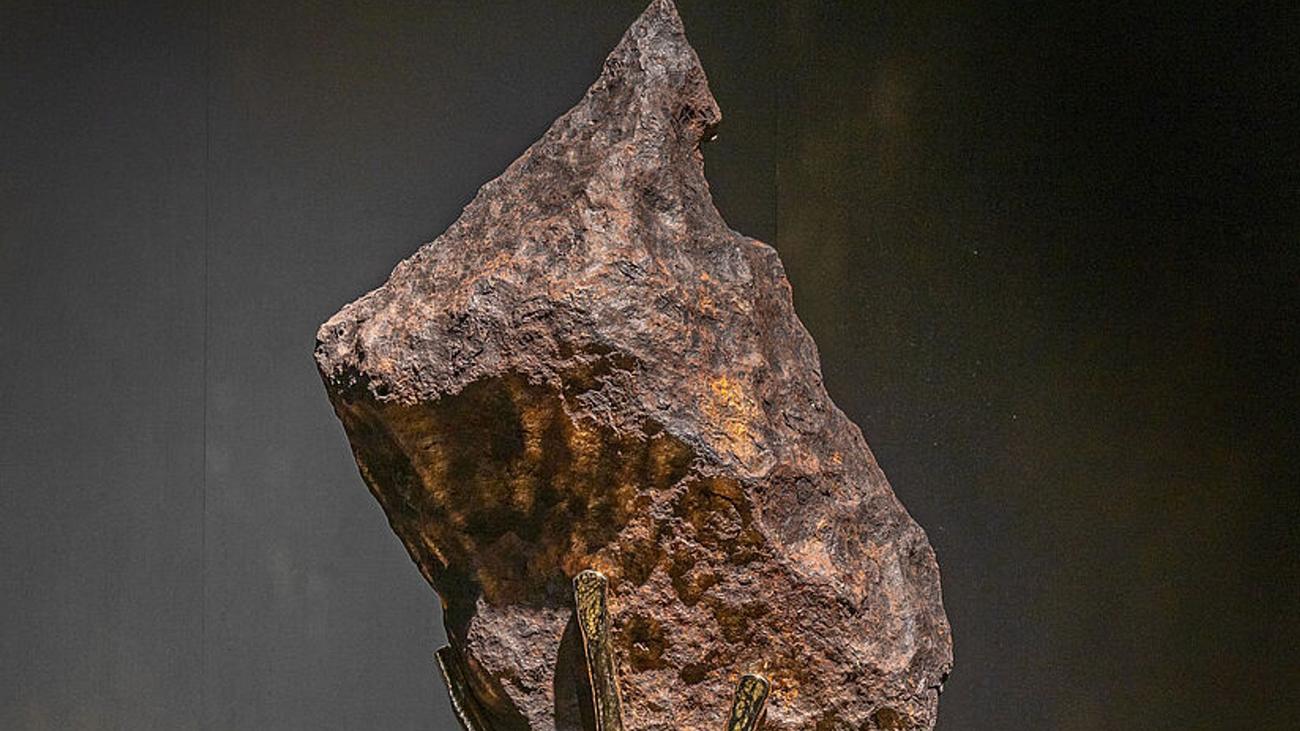
Issigau: The Largest Meteorite Ever Found in Germany Arrives at the Deutsches Museum
A celestial wanderer from the depths of space has found a temporary home at the Deutsches Museum in Munich. "Issigau," a colossal 136.4-kilogram meteorite, is the largest and heaviest of its kind ever discovered on German soil.
From Outer Space to Issigau
Descending from the distant celestial realm, the meteorite crashed into Issigau, a municipality in the Hof district of Upper Franconia. Its impact left an enduring mark, not only on the landscape but also on its name. The extraterrestrial visitor bears the very name of its landing site, Issigau.
A Monumental Presence in the Deutsches Museum
Now, this extraordinary celestial fragment takes its place as a captivating centerpiece in the entrance area of the Deutsches Museum’s Space Exhibition. Its colossal dimensions, measuring approximately 60 x 35 x 21 centimeters, command attention. The meteorite’s arrival fills a temporary void left by the recent removal of a wall installation dedicated to visionary space pioneers.
"This is like being in space itself, so it’s the perfect setting for our extraterrestrial visitor," remarks Andreas Hempfer, Curator of Space.
A Gift from the Heavens, on Loan from the Earth
The Deutsches Museum is indebted to "The Munich Show – Münchner Mineralientage" for the generous loan of this cosmic treasure.
Unveiling Issigau’s Ancient Origins
Excavated during construction work in Issigau’s Reitzenstein district some five years ago, the meteorite’s heavily weathered surface suggests a terrestrial sojourn spanning millennia.
"The exact time of its arrival is still being meticulously determined through advanced and time-consuming isotope measurements," Hempfer explains.
Preliminary analysis indicates that Issigau originated in the asteroid belt between Mars and Jupiter, making it approximately 4.6 billion years old.
"This makes it the oldest object currently on display at the Deutsches Museum," Hempfer points out, "even older than the lunar rock showcased alongside our Lunar Rover in the rear section of the exhibition."
A Tangible Link to Cosmic Origins
Meteorites offer a tangible connection to the origins of our universe. They are remnants of asteroids, providing insights into the composition of these celestial bodies and the formation of our solar system.
A Window into Potential Extraterrestrial Resources
Michaela Meier, Curator of Mining and Raw Materials, highlights the potential significance of meteorites in addressing Earth’s growing resource demands.
"The extraction of metals from asteroids is being actively explored as a means of supplementing our finite earthly resources," she says. "As fragments of asteroids, iron-nickel meteorites like Issigau provide valuable information in this regard."
An Enduring Legacy for Future Generations
Issigau’s presence at the Deutsches Museum marks a thrilling moment for science enthusiasts, space explorers, and all who marvel at the wonders of the cosmos. It serves as a tangible reminder of the vastness and mystery of the universe, inspiring awe and fueling imaginations.
As the exhibition draws to a close on June 30th, Issigau will return to its celestial guardians at "The Munich Show – Münchner Mineralientage." Yet, its legacy will endure, leaving an indeli
